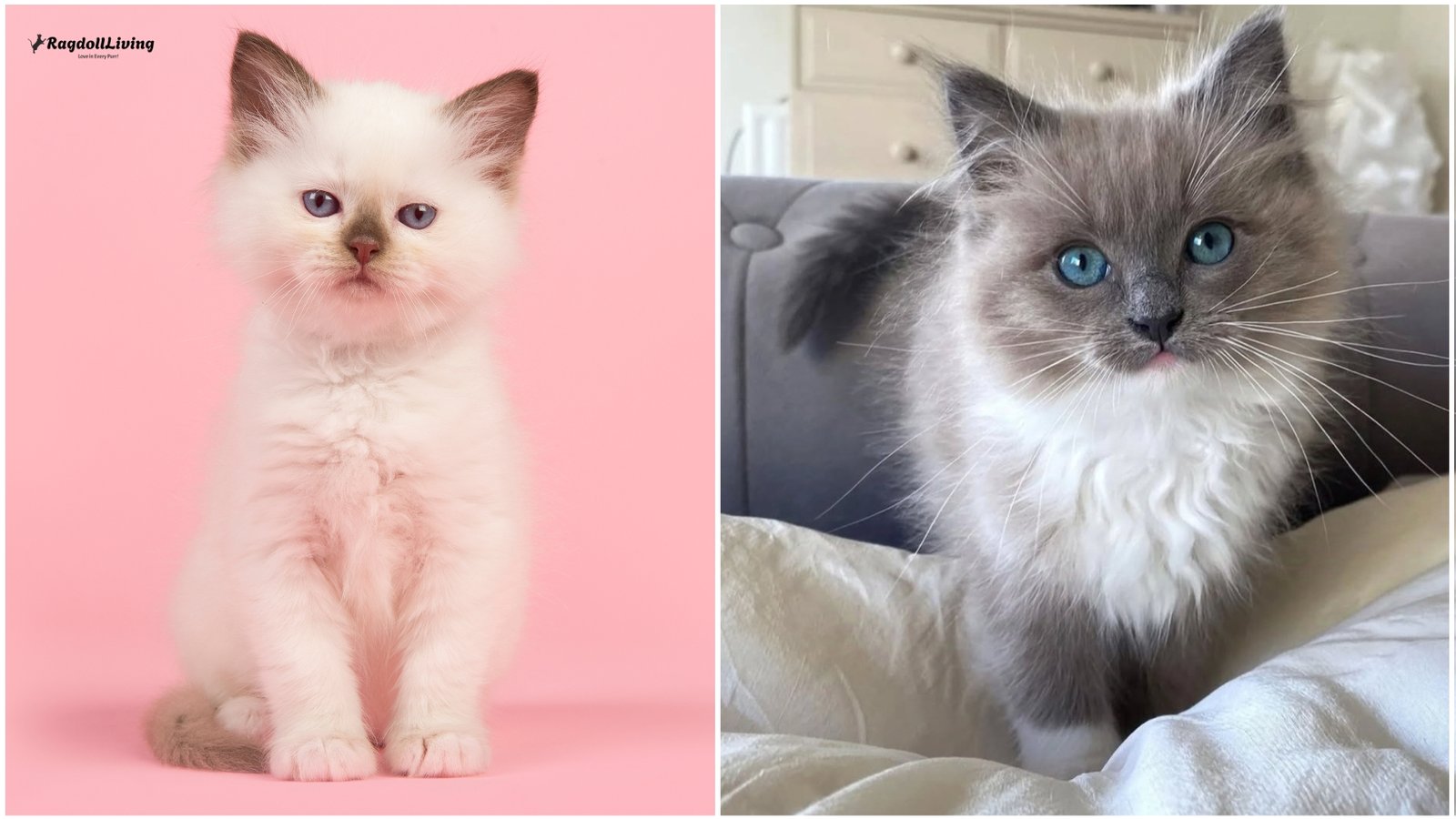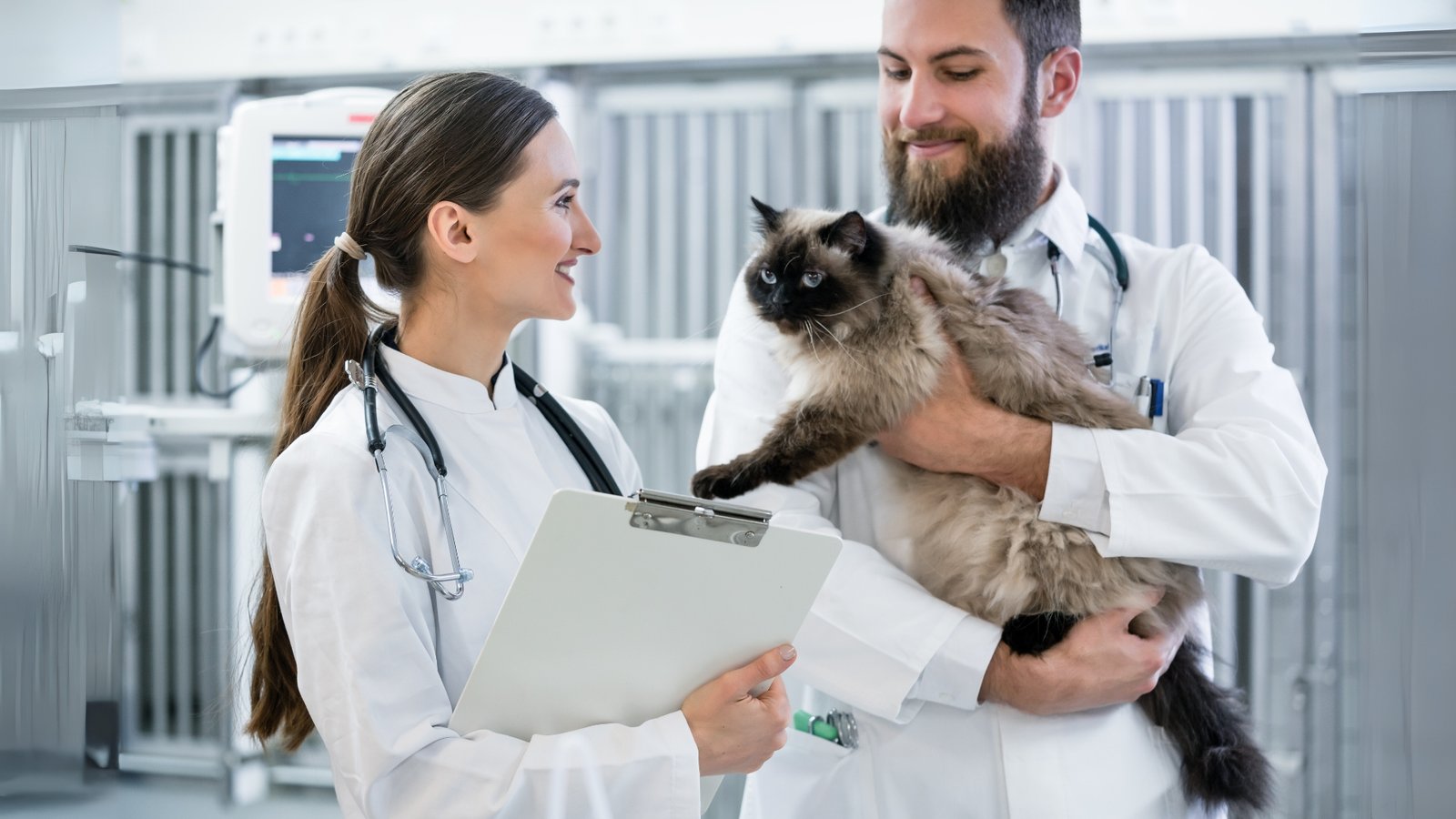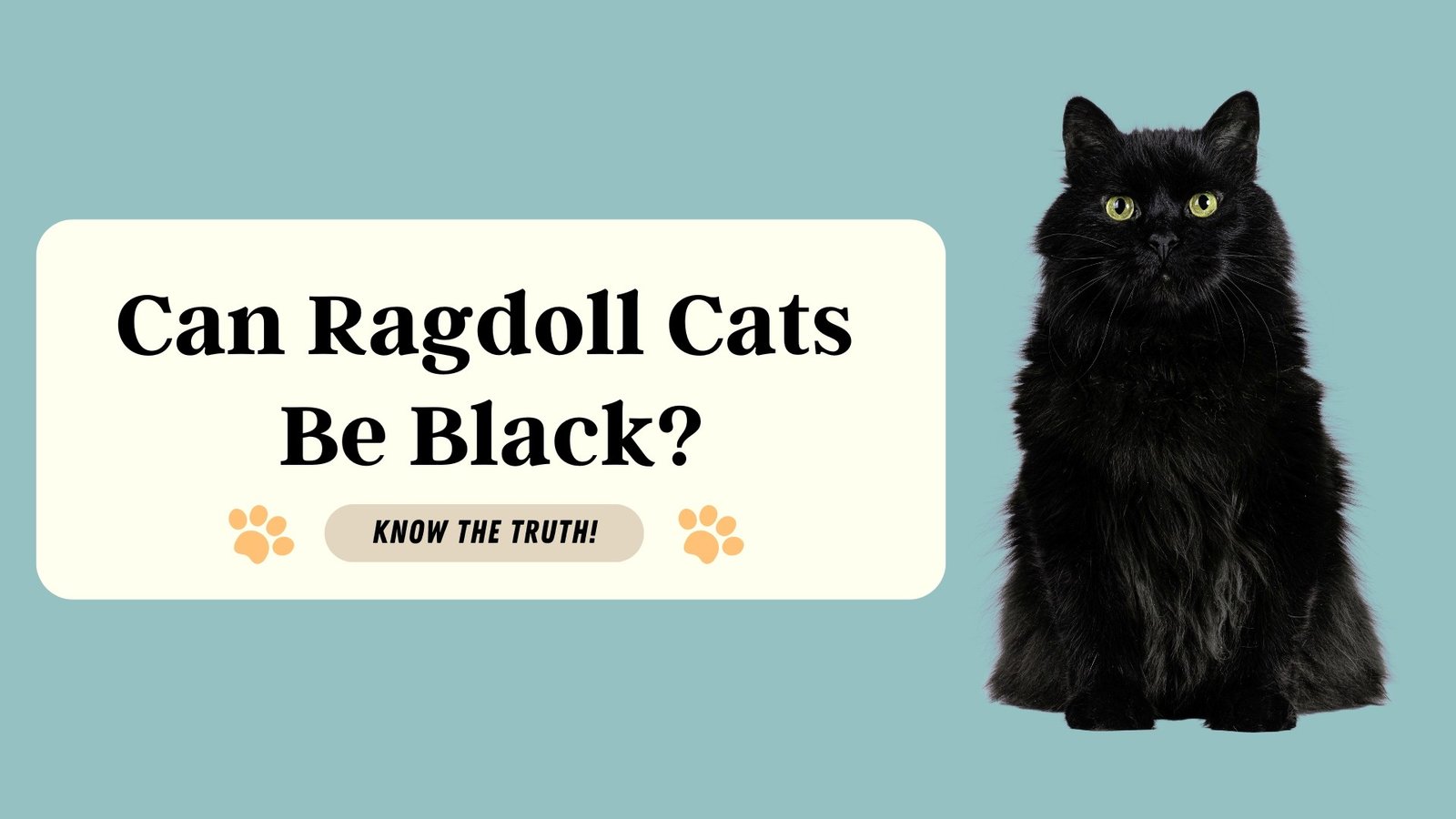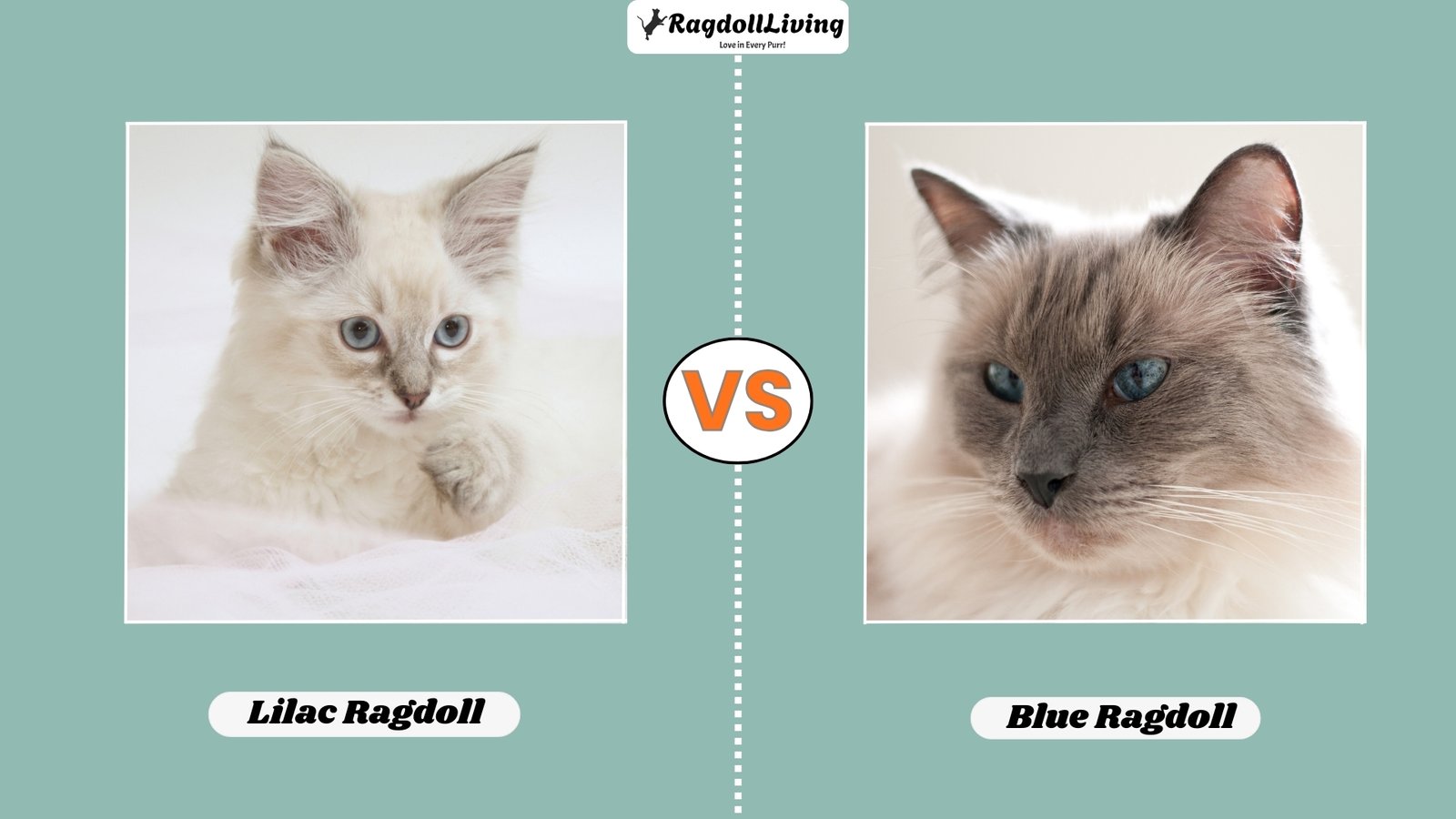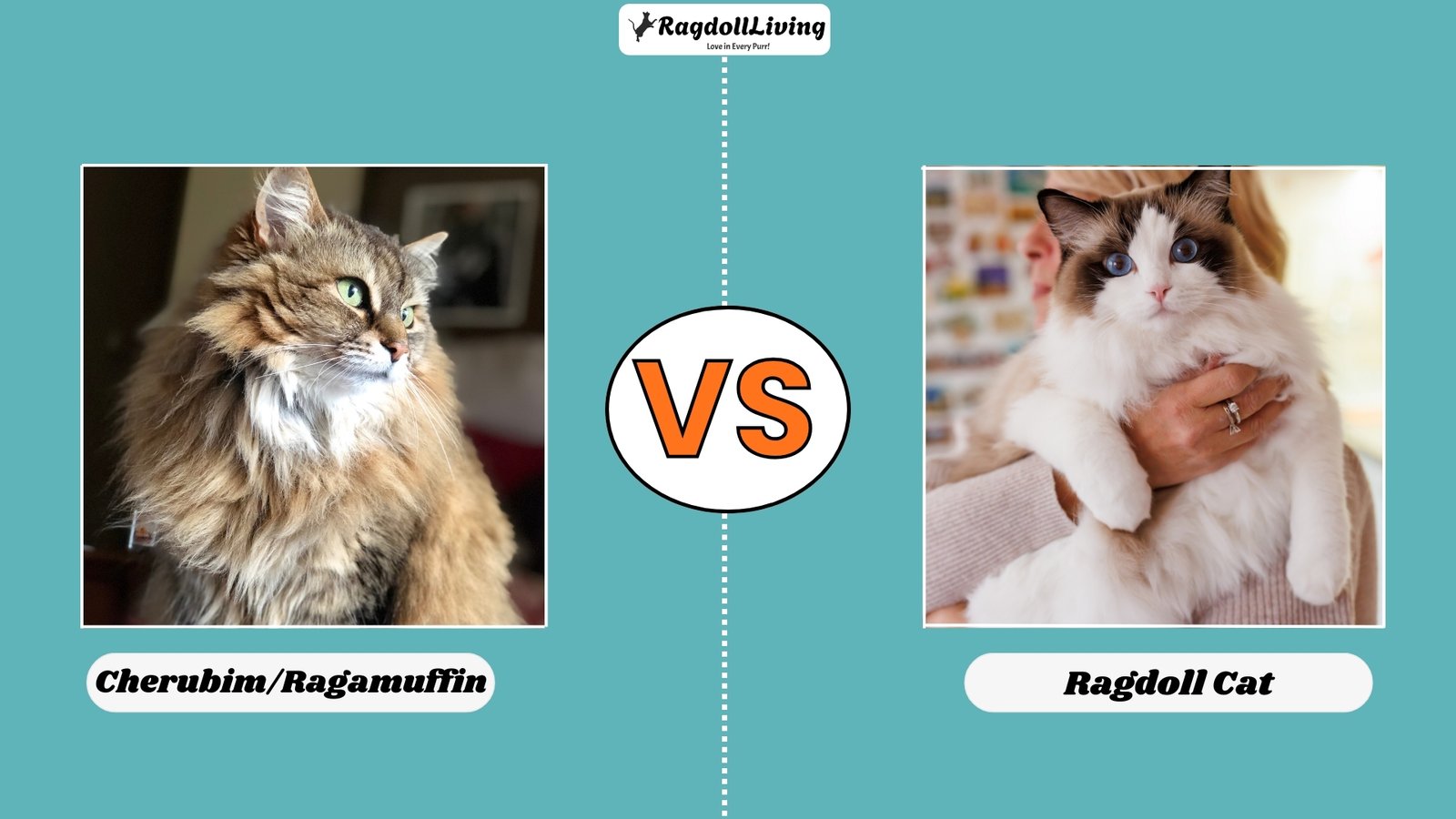Both mink and traditional ragdolls are incredibly prevalent, SBT & TICA-approved, and have that plush coat and sweet, placid temperament that the ragdoll breed is pretty famous for. Although they’ve very much in common, they do exhibit some contrasts that in this guide we’ll share based on our research, observations, and breeders’ insights. Read on and have a look!
Traditional vs Mink Ragdoll Cats – Breed Overview
Since both traditional and mink cats are purebred, they share the same traits.
- Weight – 10-20 lbs (6.80-9.07kg)
- Height – 23-28 cm
- Life Expectancy – 12-15 years
- Personality – Friendly, easygoing, Placid, loyal.
- Fits Well With – Solo, couples, families with kids & other pets.
How Mink Ragdolls Differ from Traditional Ragdolls
Color Development
The big difference we’ve noticed between mink and traditional ragdoll cats is in their genes, which influence their coat hue, hair thickness, and eye color. Where traditional ragdoll cats are born fully white and you’ll start seeing their pointed colors coming in within 2 weeks, mink ragdolls are born with warmer colors that become more apparent in 2-3 days.
Eye Color
In the same way, their eyes start out as a striking blue in both mink and traditional, but the mink kitten’s blue eye color turns into aqua blue (combination of blue & green) by the time they’re 12 weeks old. Though, traditional ragdoll cats’ eye color remains a deep, bright blue throughout their lives. Turns out, this difference is particularly favorable if you’re looking for a distinct eye-color ragdoll breed!
Coat Texture & Pattern Variations
Unlike the traditional Ragdoll’s bright blue peepers, the mink’s fur is also visibly unusual. Their coat is extra softer and lushly dark, with a pretty even distribution of color throughout. Traditional Ragdolls retain those bold, distinct color points on their ears, face, paws, and tail. Minks, by contrast, have a more subtle, uniform coloration across their entire coat.
Gene Difference
TICA calls mink “Cherubim (CB)” because they carry both the Burmese gene (CB) and the pointed gene (CS). This mix (cbcs) gives their coat a richer color, but not as dark as a full-color cat. Traditional Ragdolls only have two pointed gene (CS) copies that they pass to their offspring.
Colors & Patterns of Mink & Traditional Ragdoll Cats
If you think Mink ragdoll could only come in dark chocolaty or solid colors, then it needs a bit of clarification. We’ve listed below colors & patterns that both Mink and traditional ragdoll cats can come in.
- Seal Ragdolls
- Blue Ragdolls
- Chocolate Ragdolls
- Tortie Ragdolls
- Red Ragdolls (Also known as flame ragdolls)
- Solid Ragdolls
- Cream Ragdolls
- Lilac Ragdolls
Not to mention, minks come in all the usual patterns you’d expect. You’ll see color points with solid-colored bodies, mittens with cute white paws and bibs, and bi-colors sporting an inverted “V” on their face. Some even have Lynx patterns with Tabby-like markings.
Traditional vs Mink Ragdoll – Historical Overview
The Ragdoll breed was established by Ann Baker, a breeder in California, who desired to create a cat with a docile temperament, fluffy fur, and eye-catching look. She had bred a semi-long-haired white cat named Josephine with a seal-mitted male, Daddy Warbucks, and a solid black male, Blackie, and the first traditional Ragdoll litter was born.
Meanwhile, Mink ragdolls are not a superior bloodline but rather a subset of the traditional Ragdoll breed. They do hold both the pointed gene (cs) and the Burmese gene (cb), which combine to produce the Mink gene (cbcs). Within the original ragdoll lines, Mink cats share the same affectionate personality, puppy-like size, and soft, plush coat.
Still, their international breed standard is pretty controversial, not approved by CFA, but allowed by TICA & SBT to be registered. So far TICA (The international cat association) hasn’t written “mink” into the ragdoll breed standard, they’ve displayed on their site.
After spending a very fair amount of time researching about Mink ragdoll history, we’ve noticed, from the very outset of the ragdoll breed, the mink variation was present, though less recognized than the traditional ragdoll type.
Over time, as the breed evolved through selective breeding efforts, Minks even gained popularity due to their silky soft fur, lovely personality, floppy body, and mesmerizing eyes.
The Rarity Of Mink Ragdoll Cats

Contrary to popular belief, mink Ragdoll cats aren’t rare within the Ragdoll breed. Traditional Ragdoll kittens might be more common, but mink Ragdoll kittens are readily available from reputable breeders. The misconception about their rarity likely stems from less awareness about this color variation.
They’re a more expensive breed, though, both traditional and mink Ragdolls are purebred cats, sharing the same breed standards. The difference lies in their coat color genes, and especially their eyes, which affect their appearance but not their overall health or temperament.
If you’re set on a mink Ragdoll, you might need to search a bit more about whether you need seal mink ragdoll cat, chocolate mink, or blue mink, but you’ll easily find them without too much trouble.
Wrapping Up…
All in all, mink, sepia, colored, and traditional ragdoll cats are all purebred, grow up slowly, go limp when held, and are generally considered very healthy cats. There are a few bunch of differences between traditional and mink ragdoll cats that we already had written in this guide pretty clearly. whether you opt for a traditional or mink Ragdoll, we’re sure, you’d be smitten by these gentle giants. Their loving, loyal nature and stunning good looks make them wonderful additions to any family.
Written By: Usman Malik | Reviewed By: Ali Abbas | Fact Checked By: Aqib Zulfiqar



